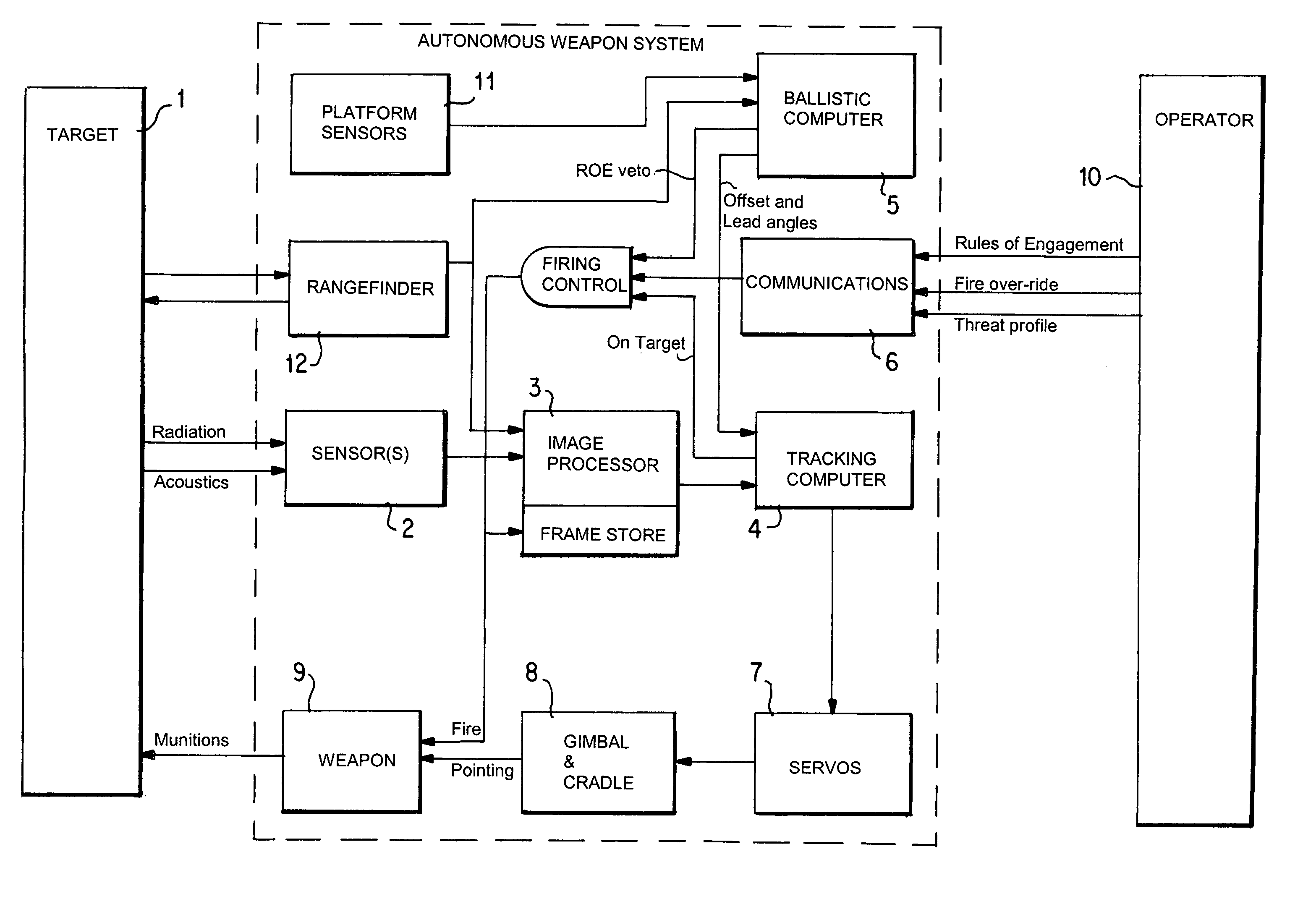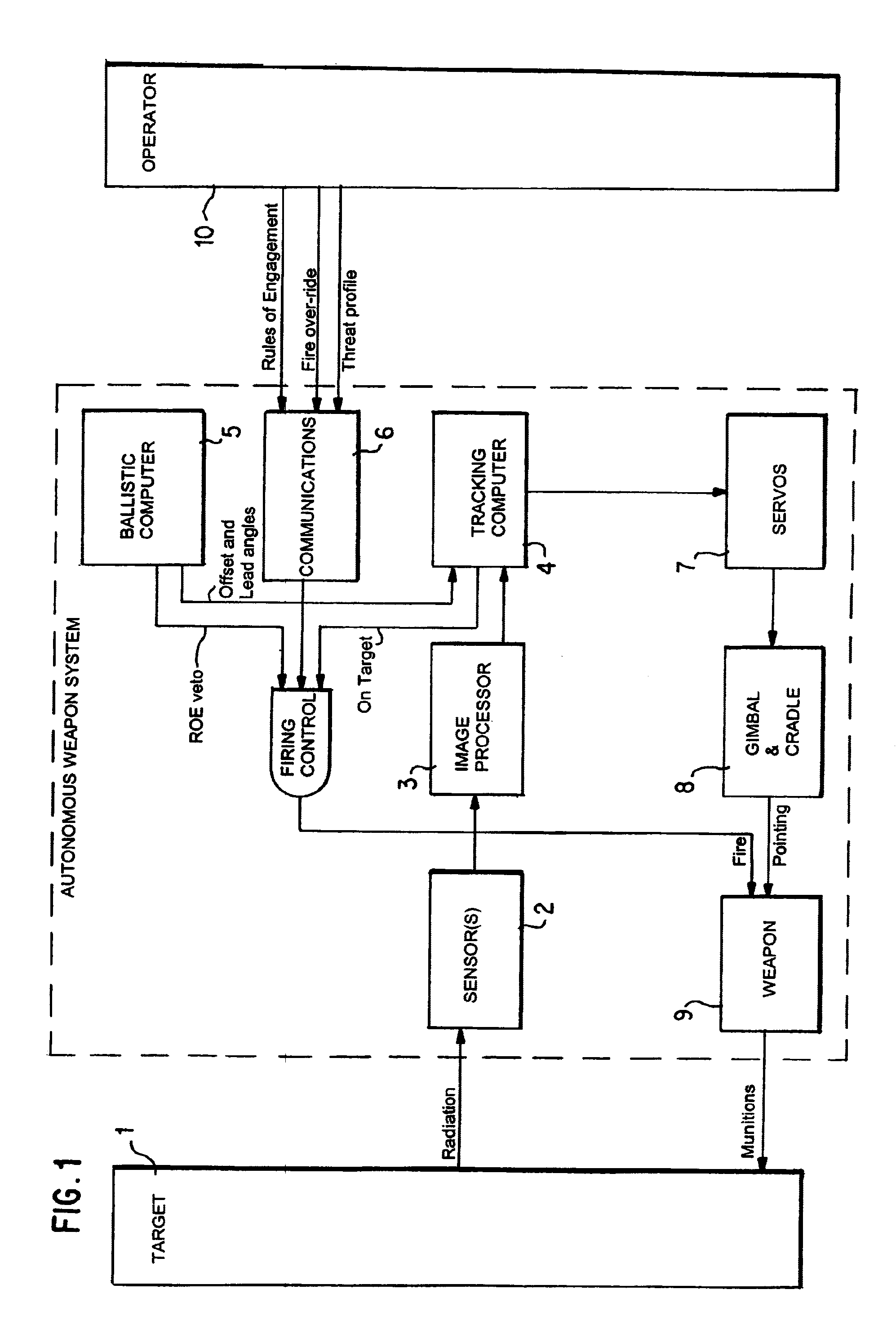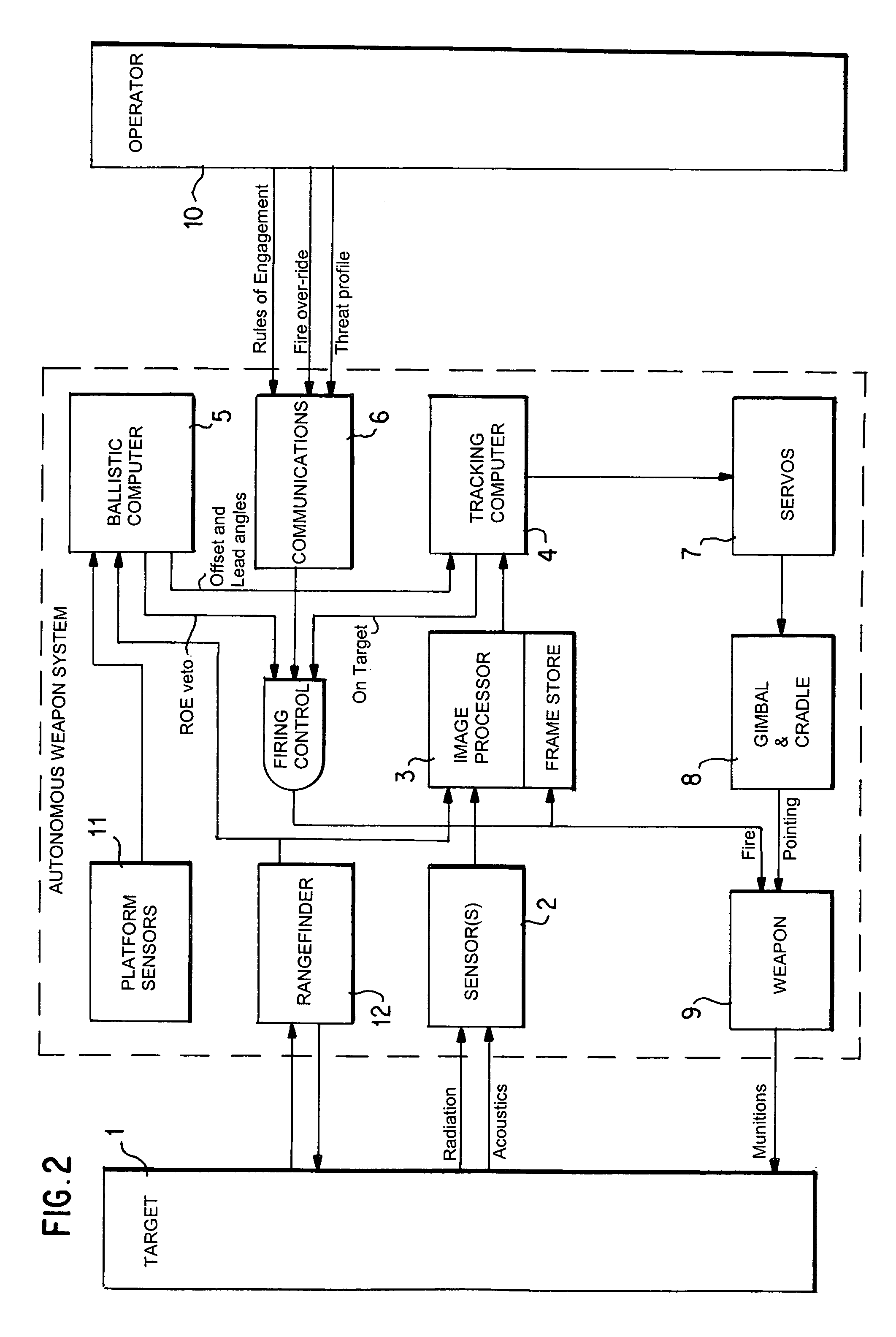Autonomous weapon system
a weapon system and automatic technology, applied in the field of automatic direct fire weapon systems, can solve the problems of manual weapon pointing, poor accuracy, and substantial degrading of overall combat effectiveness, and achieve the effects of reducing reaction times, enhancing effectiveness, and sufficient processing power
- Summary
- Abstract
- Description
- Claims
- Application Information
AI Technical Summary
Benefits of technology
Problems solved by technology
Method used
Image
Examples
Embodiment Construction
(a) System Overview: AWS
[0053]Electro-magnetic energy reflected or radiated by the target [1] is detected by the imaging sensors [2]. Typical imaging sensors include CCD or CMOS cameras, intensified CCD or CMOS cameras, high quantum efficiency CCD or CMOS cameras operating at very low light levels, thermal imaging cameras, and bolometric thermal sensors.
[0054]A single imaging sensor is sufficient to provide an image that meets the basic requirements for the AWS to operate. However multiple sensors operating in both visible and infrared spectrums, and with their combined data used to make decisions in respect of target detection, provide improved performance.
[0055]The image(s) from the sensor(s) are passed to the image processor [3] where they are digitally enhanced and processed to detect and classify objects of interest.
[0056]Once the image processor [3] has detected and classified a target, its position and motion relative to the boresight of the sensor system is determined on the...
PUM
 Login to View More
Login to View More Abstract
Description
Claims
Application Information
 Login to View More
Login to View More - R&D
- Intellectual Property
- Life Sciences
- Materials
- Tech Scout
- Unparalleled Data Quality
- Higher Quality Content
- 60% Fewer Hallucinations
Browse by: Latest US Patents, China's latest patents, Technical Efficacy Thesaurus, Application Domain, Technology Topic, Popular Technical Reports.
© 2025 PatSnap. All rights reserved.Legal|Privacy policy|Modern Slavery Act Transparency Statement|Sitemap|About US| Contact US: help@patsnap.com



